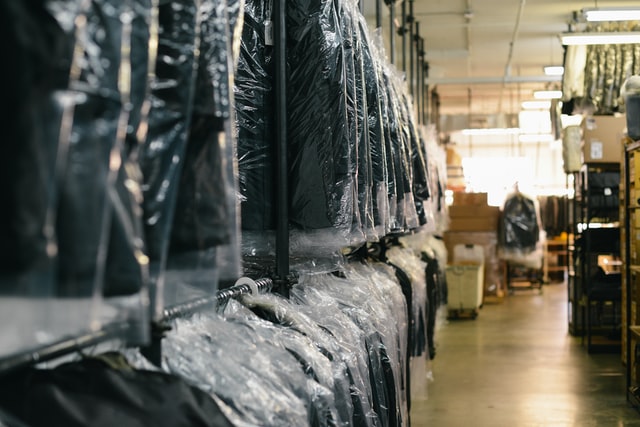To run a successful dry cleaning business, you need the right equipment. This article will cover some of the most common equipment in dry cleaning shops, including Sorting bins, Washers, and Dryers. In addition, you’ll learn about perchloroethylene, one of the most common chemicals used in dry cleaning. Learn what the equipment does and how it works to improve your bottom line. You’ll be able to create an efficient dry cleaning business that’s both profitable and environmentally friendly.
Sorting bins
When you run a dry cleaning business, sorting bins are essential equipment. These bins help dry cleaners separate whites and colors and customer orders. They also help dry cleaners keep their operations organized. Sorting bins help transport clothes from the assembly system to the washer and dryer. These machines also have racks for garment coverings and hangers. Once the garments are finished, they are moved back to the assembly system.
A dry-cleaning business will need fabric-cleaning chemicals, stain removers, starch, and upholstery cleaner for dry-cleaning operations. Depending on the dry cleaner’s type of dry-cleaning service, they may also need a suede and leather cleaner. They will also need presses resembling oversized irons that steam an article of clothing when pressed head-down. Presses are most often used for pants, jackets, and other items in the press cleaners. Finally, the sorting bins are essential for dry-cleaning operations to separate whites and colors from colors and for transporting items to the washer and dryer.
Washers
Washers and dryers are an integral part of your dry cleaning business. They not only clean the clothes but also sort and assemble them to ensure they are returned to the customer in perfect condition. Dry cleaning equipment includes washing machines and dryers for large loads and those with enough space. Cleaning chemicals are also essential. Tide Cleaners has a four-step process for cleaning clothes, including color-safe bleach, Downy fabric conditioner, and proprietary whiteness-enhancing technology. Presses give the clothes a smooth appearance. These machines are similar to large irons.
Today, perchloroethylene recycling has made it possible for dry cleaners to recover almost all of the perc used in cleaning. Not only is this process better for the environment, but it also saves the dry cleaners money! In addition, dry cleaning machines allow them to wash and iron more items than before. These machines are an essential part of any dry cleaning business. They can make a huge difference to the overall quality of your work.
Dryers
Most dry cleaners use perchloroethylene, a petroleum-based solvent. It is a common carcinogen and a significant air and groundwater pollutant. However, there are eco-friendly alternatives to perchloroethylene. For example, a micropore filter dilutes a detergent to lower graying levels by emulsifying hydrophobic soils. These solvents are more expensive than perchloroethylene, but they are less aggressive than perchloroethylene and can be used in dry cleaning.
Perc is a heavily-regulated industrial chemical, but some dry cleaners have already switched to hydrocarbon solvents. For these businesses, changing machines and chemicals can be costly and time-consuming. Dry cleaners are not the only ones using this alternative. Other options include GreenEarth, K4, Sensene, and wet cleaning. However, this is a complex endeavor. Dry cleaners must invest in specialized training and equipment to adopt this technology.
Perchloroethylene
PERC is the most commonly used solvent in dry cleaning. Unfortunately, it is a neurotoxicant, reproductive toxin, a possible human carcinogen, and a persistent environmental pollutant. This chemical has many health concerns, and the Environmental Protection Agency is currently evaluating its use to determine its long-term effects on the environment. While this solvent is no longer the primary solvent for dry cleaning in the U.S., some local governments have instituted programs to require or facilitate the transition to other cleaning processes.
Dry cleaning solvents such as perchloroethylene are hazardous compounds that contain benzene and other compounds. Because CAS numbers do not uniquely identify chemicals in a chemical class, the HWMP concluded that they are potentially dangerous to human health. While their health risks are relatively low, they still threaten human health. While the EPA has approved PCE and other dry cleaning solvents for dry cleaning, the U.S. Environmental Protection Agency (EPA) has approved hydrocarbons for dry cleaning.
Hydrocarbons
Hydrocarbons are substances commonly used in dry cleaning equipment that can cause health hazards. Although high-flashpoint hydrocarbons, such as benzene, are not expected at industrial levels, the potential health risks to workers still warrant further research. A study aimed to understand the average exposure to these chemicals in dry cleaning equipment and workers. The study found that two dry cleaning shops used butylal as a solvent. Butylal is a dibutoxymethane and formaldehyde dibutyl acetal. Butylal is present at concentrations ranging from 0.5 to 0.05% but is not carcinogenic. Butylal can be hydrolyzed in the presence of heat and acid.
Modern hydrocarbons have many benefits over their primitive counterparts. They are synthetically manufactured, and their physical properties can be carefully controlled. Hydrocarbons that are safer to use in dry cleaning equipment are less likely to cause health problems. Hydrocarbons also have a pleasant fragrance that is safe for the environment and the health of customers and employees. These solvents do not have the same chemical solid odor as perchloroethylene and therefore don’t cause skin irritation.


